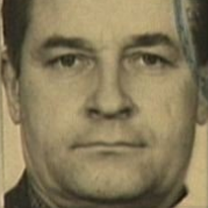
d: 1998
Leonardas Zavistonovičius
Summary
Name:
Leonardas ZavistonovičiusYears Active:
1998Status:
DeceasedClass:
Mass MurdererVictims:
9Method:
ShootingDeath:
February 15, 1998Nationality:
Lithuania
d: 1998
Leonardas Zavistonovičius
Summary: Mass Murderer
Name:
Leonardas ZavistonovičiusStatus:
DeceasedVictims:
9Method:
ShootingNationality:
LithuaniaDeath:
February 15, 1998Years Active:
1998bio
Leonardas Zavistonovičius was a 58-year-old resident of Draučiai, a small rural village in the Širvintos District of Lithuania, and a member of the Polish ethnic minority. He had legally owned firearms for hunting since 1975, with his permits regularly renewed through psychiatric evaluations as required by Lithuanian law. Outwardly, Zavistonovičius was seen by neighbors as an intelligent, helpful, and quiet man. However, those closest to him, particularly his relatives and his third wife, began noticing signs of psychological instability dating back to the late 1970s.
It is believed that his mental health decline may have been triggered by a serious car accident in 1976. From around 1978 onward, family members observed increasing signs of paranoia, including morbid jealousy and persecution delusions. These symptoms became more pronounced in the years leading up to the shooting, especially after his third wife separated from him roughly ten months before the attack. Despite this, Zavistonovičius was never formally diagnosed with a disqualifying psychiatric condition in his routine evaluations for firearm ownership. In fact, earlier records from 1985 indicate he had been referred to the Vilnius Psychiatric Hospital, but due to the lack of a centralized medical database, this history remained inaccessible to the evaluating doctors who cleared him for gun permits.
At the time of the attack, Zavistonovičius was reportedly suffering from chronic delusional psychosis, a severe mental illness with similarities to schizophrenia.
murder story
On February 15, 1998, at approximately 4:00 p.m., Leonardas Zavistonovičius launched a brutal shooting spree in his village. Armed with a legally obtained Russian-made IZH-12 hunting rifle and a Czech-manufactured ZKK-601 carbine with a telescopic sight, he began a rampage that lasted roughly thirty minutes. He targeted four neighboring homes, methodically shooting victims in the head or chest, and killed a total of nine people—many of them his neighbors or their visiting relatives.
His first victims were Jonas Bareika, who was shot while in bed, and Marytė Rutkauskienė, who was making broom stalls at the time. Zavistonovičius then moved on to Leonas Garbatavičius, shooting him at the front door of his home. At the Vrubliauskas residence, he killed Vytautas Vrubliauskas and wounded his mother Jadvyga and sister Zofija. Though both women were initially found alive and taken to separate hospitals, Zofija died that night during surgery, while Jadvyga succumbed to her injuries a week later.
The next house targeted belonged to the Raudeliūnas family, Zavistonovičius’ nearest neighbors. He fatally shot Vanda Raudeliūnienė and her daughter Dalia Kalibatienė, a senior lieutenant at the Lithuanian Ministry of National Defence. A family dog that tried to protect them was also killed. Zavistonovičius then returned to his house to fetch a mattress and used it to conceal himself in the forest, waiting to ambush three male relatives returning from chopping wood nearby. When Mindaugas Kalibatas and his two sons, Vilius and Tadas, emerged from the forest, he shot Mindaugas in the chest, injuring him, and killed Vilius as he tried to protect his father. In a desperate counterattack, Mindaugas and Tadas wrestled Zavistonovičius to the ground, seized his weapons, and beat him until he collapsed.
With no working phone lines in the village, Mindaugas Kalibatas drove himself and his son to the nearest hospital, 15 kilometers away in Širvintos, but Vilius died en route. Authorities were alerted by the hospital and rushed to the scene, where they found Zofija and Jadvyga still alive and Zavistonovičius in critical condition. He was taken into custody but died at approximately 10:00 p.m. from a skull fracture sustained during the struggle.
The violence left only two inhabitants of the village alive: Antanas Raudeliūnas and Zavistonovičius’ own elderly mother, Juzefa.
The massacre shocked the nation, especially as it occurred on the eve of Lithuania’s 80th anniversary of its Act of Independence. Because the victims were Lithuanian and the perpetrator was ethnically Polish, initial fears arose about a potential political motive. These concerns prompted the Lithuanian government to swiftly assemble a commission to investigate the crime. The presidential office even attempted to delay media coverage until after the Polish president’s visit to Vilnius for the independence celebrations. Ultimately, the investigation concluded that the attack was not politically motivated but was the result of untreated and undiagnosed mental illness.